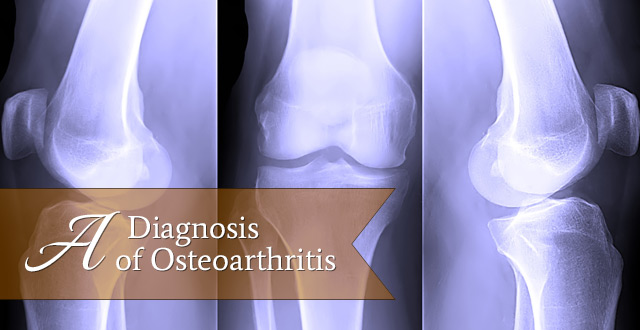Not too long ago, I was having a phone conversation with my mother. You know the ones. They start off with some initial catch up. You play 20 questions about the house, the animals, your significant other. After that, you partake in some family gossip. “Dad did what?!”, or “Guess what I heard from Aunt so-and-so?”. Then the inevitable health portion of the conversation commences.
How one thing leads to another
My mother is one tough cookie! She has not only dealt with quite the array of surgeries over the years, but there have been some painful ones! Surgeries that involve bone are the worst. You haven’t felt pain until you’ve felt the burning, throbbing, “did they forget a tool in there?!” pain that comes with a bone surgery. The reason I am mentioning this is that my mother just had one of those kinds of surgeries. The circumstances surrounding her diagnosis and treatment of an injury in one knee, led to the diagnosis of arthritis in her other knee. Is that luck, or is that luck?
Managing Symptoms of Arthritis
A common misconception is that Arthritis is one disease. The truth is that Arthritis is a catch-all term for over 100 varieties of joint ailments. Arthritis affects millions of people, and is the cause of over one million hospitalizations annually. Arthritis is a severe and debilitating family of ailments that requires proper care and ongoing maintenance.
The most common forms of Arthritis are:
- Osteoarthritis,
- Firomyalgia,
- Gout,
- Rheumatoid Arthritis,
- and Lupus.
It is not uncommon for someone to live, unaware that they have any form of Arthritis. My mother is one of those people. Sure, she had aches and pains, but like many, she soldiered on without a second thought. It wasn’t until two years after the pain began that an unrelated injury would reveal the underlying cause of much of her daily pain. A torn meniscus, bone on bone friction, and bone fragmenting in her right knee forced my mother to begin favoring her left knee. Leading up to her surgery, my mother continued to go to work. One evening, while completing a task that she has done hundreds of times before, something happened. Because my mother was favoring her left leg, all of her body weight had been transferred to one side of her body. She stepped onto a step stool, and POP … she heard a concerning sound, followed but immediate swelling and pain. It was only after a visit to her doctor that she found out that she had Arthritis in her left knee! Osteoarthritis to be specific.
What is Osteoarthritis?
Osteoarthritis affects tens of millions of adults. It is the most common type of Arthritis. It is a degenerative form of Arthritis where the cartilage, the firm, light colored, flexible connective tissue between bones, breaks down. This causes two pieces of bone, once separated by cushioning, to begin rubbing against each other. Osteoarthritis is commonly found within weight-bearing joints, such as the pelvis, knees, and spine.
Is there a cure for Osteoarthritis?
Unfortunately, there are only two courses of action. The first is a course of symptom management. The other course of action, when management is not an option, is joint replacement.
Some ways to manage your Osteoarthritis include:
- Stretching exercises
- Physical Activity
- Weight management
- Muscle building activities
When the management of your Arthritis is not an option, joint replacement may be the next best option. Schedule regular visits with your doctor to monitor your condition. Ongoing data that you collect and discuss with your physician is the best way to ensure you don’t worsen your condition.
As for my mother, her surgery was a success! Like I said, she’s very tolerant of pain, but I don’t envy her. She goes to physical therapy three times a week. Once physical therapy is completed, she will have to continue to exercise and monitor her condition, but she has options, and that is a very good thing.

